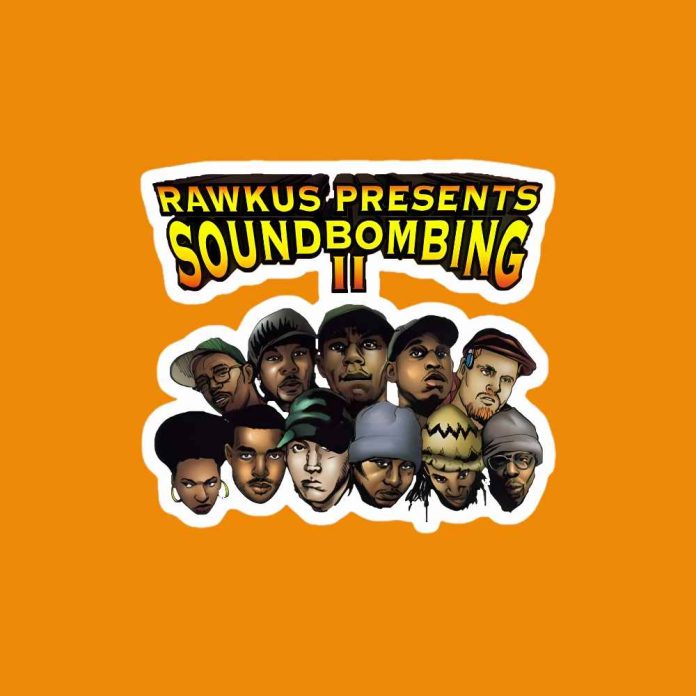
Released in 1999, Soundbombing II remains one of the most influential underground hip-hop compilations. Produced by Rawkus Records, the album brought together top-tier MCs and producers. It showcased lyrical talent and helped shape the sound of hip-hop as the genre transitioned into the 2000s. More than 20 years later, its influence still echoes throughout the hip-hop world, impacting both established artists and the evolving sound of modern hip-hop.
The Historical Significance of Soundbombing II
In the late ’90s, mainstream hip-hop was dominated by polished, commercial sounds. Artists like Jay-Z and Puff Daddy ruled the airwaves, but the underground scene was brewing something different. Rejecting the flashy, commercial aesthetic, underground artists focused on raw lyricism, gritty production, and socially conscious themes. Soundbombing II captured this underground ethos. The album solidified Rawkus Records as a hub for authentic, innovative hip-hop. It gave a platform to emerging legends like Mos Def, Talib Kweli, Common, and Eminem.
Soundbombing II was a tribute to hip-hop culture, featuring sharp rhymes, deep storytelling, and production that blended jazz, soul, and boom-bap beats. The album’s themes ranged from social commentary to personal reflections, diving into life in urban America. Tracks like Mos Def and Talib Kweli’s “Thieves in the Night” explored race, identity, and systemic oppression, while Eminem’s “Any Man” showcased the chaotic energy that would catapult him into superstardom.
A Legacy That Continues to Influence
Today’s hip-hop artists often cite Soundbombing II as a source of inspiration. The album’s blend of soulful samples and hard-hitting boom-bap paved the way for genre-bending experimentation in modern hip-hop. Artists such as Kendrick Lamar, J. Cole, and Joey Bada$$ owe a debt to Soundbombing II, as they incorporate lyrical depth and diverse sounds into their work.
Soundbombing II also redefined the idea of collaboration. By bringing together artists who might not have otherwise worked together, the album fostered a sense of community within the underground scene. This collaborative spirit has become a hallmark of today’s music industry, where cross-genre partnerships are common. Projects like Dreamville’s Revenge of the Dreamers III and Kanye West’s GOOD Music collaborations show how this approach continues to influence contemporary artists.
Reflections from Contemporary Artists
Many of today’s artists continue to reflect on the significance of Soundbombing II. In a 2020 interview, Joey Bada$$ called it a “blueprint for staying true to your lyrical roots while pushing the genre forward.” For him, it wasn’t just about the music; it was about the message. Similarly, Rapsody, known for her sharp lyricism and conscious themes, has spoken about how albums like Soundbombing II paved the way for artists to balance commercial success with artistic integrity.
The album’s impact is also evident in production styles today. Producers like Madlib and Alchemist have praised the album’s sonic direction. Tracks like “B-Boy Document ‘99” and “1-9-9-9” captured the essence of underground hip-hop’s boom-bap sound. Modern producers continue to evolve this style, adding new layers that reflect contemporary influences.
Themes and Evolution in Today’s Hip-Hop
One defining aspect of Soundbombing II was its focus on lyrical content and thematic exploration. The album tackled social justice issues, personal struggles, and other topics still relevant today. Artists like Kendrick Lamar and J. Cole continue this tradition, using their platforms to discuss systemic inequality, race, and mental health—central themes of Soundbombing II.
The compilation also encapsulated the creativity and drive of underground artists pushing for their voices to be heard. This rebellious spirit thrives in today’s independent artists, who, like the pioneers of Soundbombing II, resist commercial pressures and create music that reflects their lived experiences.
Conclusion
Music Industry Weekly understands that Soundbombing II is a seminal project in hip-hop history, not only for its star-studded lineup but for its enduring influence on the genre. During a time when mainstream hip-hop was dominated by polished commercial sounds, the album reminded listeners of hip-hop’s roots in lyricism, storytelling, and social consciousness. Its impact on modern hip-hop is undeniable, as today’s artists continue to challenge boundaries and push the genre forward. As the lines between mainstream and underground music blur, Soundbombing II remains a testament to the power of artistry and innovation from the margins.







